Articles of 2009
Amir Khan's Growth From Arrogance
It should come as no shock to anyone that WBA junior-welterweight title holder Amir Khan has the 54th second of his 19th professional bout embedded into his mind. For it was at that point of the first round during his Sept. 6, 2008 fight with Breidis Prescott that he was stopped in a devastating fashion. Sometimes when a fighter loses like Khan did it can turn out to be a blessing in disguise. At this juncture the verdict looks as though the kayo loss to Prescott did him a lot of good; at least in the short term it appears to be so.
“When you keep winning you never look at the bad things you are doing in the ring,” the fighter said.
“Since then I've been looking at the bad things, I've been focusing and trying to do everything right. I don't want to make the same mistake again.”
Khan's words indicate that the stunning knockout loss to Prescott wiped away his arrogance as a fighter. A fighter's chin is his last line of defense and when he doesn't have one that's first tier, it's best he finds out sooner rather than later so he can do everything he can to camouflage it. Before finding out he was made of flesh and bone like all other fighters, Khan was riding high and felt that his skill-set would always be the difference and bail him out against his opponent. Some fighters who are extremely tough and take a great shot feel the same way. They believe the other guy can't knock them out, therefore they can cut corners and still win because their opponent will eventually succumb to their grit and toughness.
Both mindsets have contributed to many highly skilled and/or really tough fighters being out fought or getting caught and stopped.
Amir Khan realizing that his chin is a liability has forced him to change his game and become a more mature fighter. Now Amir knows where he can and can't go in the ring and fights with a more escalated concentration level. No, it won't prevent him from getting stopped again; that's inevitable. But it'll probably allow him to make some money and put some distance in between times now that he knows the possibility exists.
As he prepares for his Dec. 5 title defense against Dmitriy Salita 30-0-1 (16), which will be his fourth fight since being stopped by Prescott, it's obvious watching him that he's of a different mindset. Like practically every boxer who has ever been stopped or knocked out, Khan was initially hurt and ultimately stopped by a punch he didn't see. That's something all fighters regardless of their skill-set or the level in which they compete are leery of. Once it happens to them resulting in an humiliating defeat, the 100% belief they carried with them into the ring before it is reduced to 99%. And that last one percent is huge.
To compensate for that, fighters often times work their way back by adopting a slight variation into their fighting style. What they do, and it's apparent that Amir Khan has done this is, he's incorporated a more defensive posture through his offense. In doing such they lessen their chances of getting caught blindly during exchanges. Khan, being a fighter who's capable of getting off in three and four punch flurries at a time, allows himself the latitude of occupying his opponent enough to score and get out before they can effectively retaliate. When Amir isn't on the attack he's on defense; it's as simple as that. He's either getting off in volume or he's strictly on defense. And when fighters focus exclusively on pitching or catching they can better protect themselves from getting caught with the punch they don't see. Although this may be a good strategy for him, given his chin, it probably limits his potential as a fighter. Upper echelon guys have to know how to integrate offense and defense.
There's a noticable difference in Amir Khan's fundamental defense and basics. He no longer leaps in with punches and is more judicious in his assertion. He's more assertive than Wladimir Klitschko but uses movement and inconsequential flurries to hide that his radar is on high alert.
“The only thing I fear now is making those mistakes again but I never want to do that. It was a sharp learning curve getting beat by a guy I should have won against,” Khan has said.
Two things echo from Khan's thoughts above all else. Starting with how much it really bothers him that he got beat by a guy who he believes he should've beat. Understanding that woke him up and he now knows he can't get by on talent alone at the next level. And his fear of making the same mistakes again will stay with him in the back of his mind while training and when he enters the ring to fight.
Amir Khan hasn't changed drastically since being stopped three fights ago; he's just modified his style due to him knowing it could all end with one punch he didn't see. And until he's confronted by a fighter who pressures him from bell-to-bell and forces him to exchange, he'll get by. He can hide his chin for awhile but the night is out there when it'll be his last line of defense again, and that'll most likely be the final word on his career. The junior-welterweight division is littered with attackers and punchers at the top, and if his chin is his liability, his peers will eventually get through to it.
Frank Lotierzo can be contacted at GlovedFist@Gmail.com
-

 Featured Articles4 weeks ago
Featured Articles4 weeks agoAvila Perspective, Chap. 330: Matchroom in New York plus the Latest on Canelo-Crawford
-
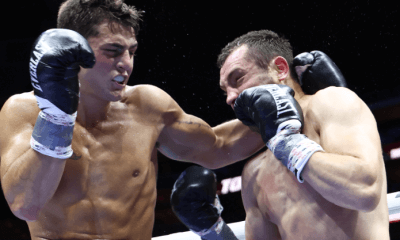
 Featured Articles3 weeks ago
Featured Articles3 weeks agoVito Mielnicki Jr Whitewashes Kamil Gardzielik Before the Home Folks in Newark
-

 Featured Articles4 weeks ago
Featured Articles4 weeks agoCatching Up with Clay Moyle Who Talks About His Massive Collection of Boxing Books
-
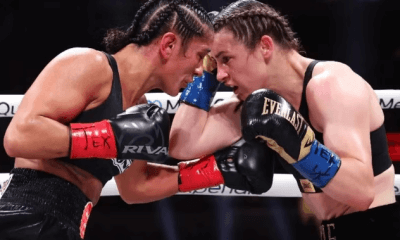
 Featured Articles6 hours ago
Featured Articles6 hours agoResults and Recaps from New York Where Taylor Edged Serrano Once Again
-

 Featured Articles5 days ago
Featured Articles5 days agoFrom a Sympathetic Figure to a Pariah: The Travails of Julio Cesar Chavez Jr
-
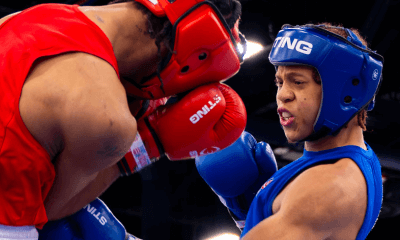
 Featured Articles3 weeks ago
Featured Articles3 weeks agoMore Medals for Hawaii’s Patricio Family at the USA Boxing Summer Festival
-
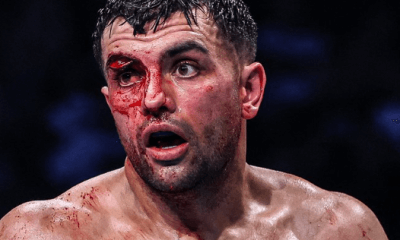
 Featured Articles7 days ago
Featured Articles7 days agoCatterall vs Eubank Ends Prematurely; Catterall Wins a Technical Decision
-
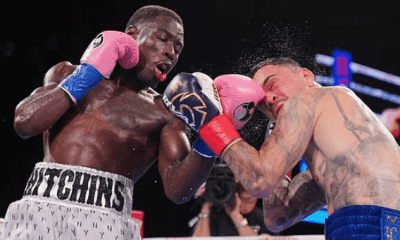
 Featured Articles4 weeks ago
Featured Articles4 weeks agoRichardson Hitchins Batters and Stops George Kambosos at Madison Square Garden

















